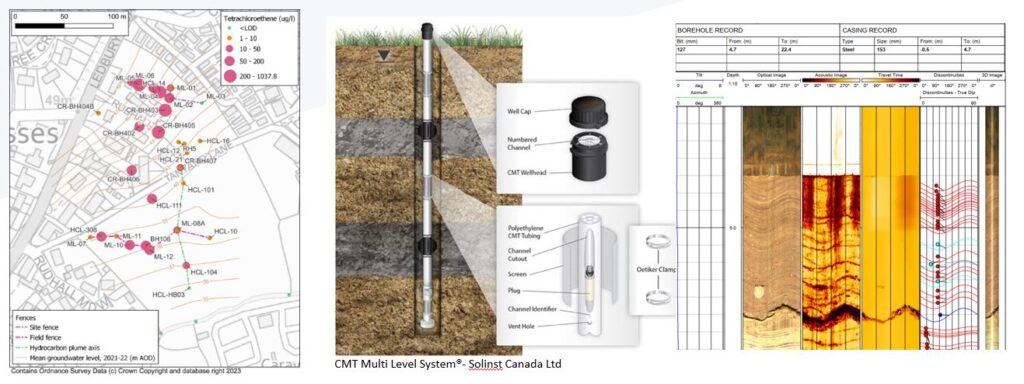CampbellReith is delighted to be shortlisted for two awards at this year’s Brownfield Awards with Brownfield and Regeneration Network.
Our project, Tanyard Lane Part 2A Controlled Waters Investigation, has been shortlisted for ‘Best Research or Application in the Advancement of Science, Technology or Digital Innovation in the Brownfield Sector’ category.
Contamination from a former dry cleaners and timber yard in Ross-on-Wye, Herefordshire, migrated through fractured sandstone towards a river and possibly a drinking water borehole, causing concern for the council and local residents. Initial clean-up efforts reduced contaminant levels, but a rebound in perchloroethylene (PCE) in groundwater required further investigation.
CampbellReith led a detailed site investigation to assess the risk under Part 2A of the Environmental Protection Act, looking at both risk to neighbouring residents from vapour intrusion and to controlled waters. One major challenge with CHC plumes is that they are denser than water and sink, making them harder to find in fractured aquifers. Using a novel method, the investigation included rotary coring with geophysics to locate main fractures, continuous multi-channel tubing (CMT) installations to allow sampling at different groundwater depths and even vapour sampling with a single standpipe. This was complimented by stream sediment and surface water monitoring to fully map the chlorinated hydrocarbon (CHC) and petroleum hydrocarbon (PHC) plumes.
CMT wells were deployed in two lines of fence wells to provide 2-D snapshots of the CHC and PHC plumes, enabling mass balance calculations between them. This allowed us to understand how much contamination is entering the river, and how this might change under different future conditions.
This project demonstrated the use of CMT and hyporheic zone monitoring in a fractured sandstone aquifer allowed for an efficient and robust assessment despite the site’s complexity. This greatly reduced the number of single or nested borehole standpipes with geophysics that would otherwise have been needed. Detailed discussions were held with Herefordshire Council and the Environment Agency throughout the project to agree the methodology and additional works as results were obtained. Regulatory approval of our report, and the conclusion that the site would be unlikely to be classified as contaminated land, was subsequently received.

For more information about this project or similar ones, please contact Antony Phin or Simon Burr. See us in Manchester for the 2024 Brownfield Awards!